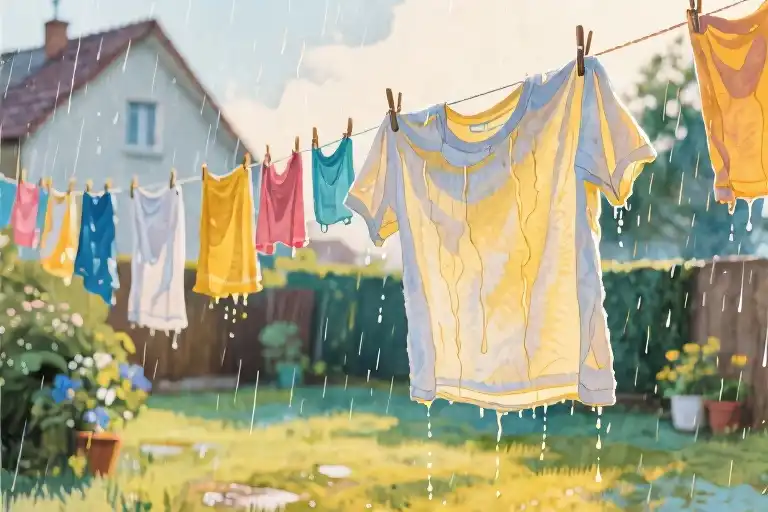The cold bathroom tiles pressed against my cheek as I curled into a fetal position, my 14th birthday party muffled through the door. Streamers and cake waited downstairs, but all I could hear was the dripping faucet keeping time with my quiet sobs. That morning, the psychiatrist had said the words ‘clinical depression’ like a life sentence, his prescription pad scratching out what felt like a death warrant for normal adolescence.
What none of us realized then was that diagnosis held an unexpected key – not to a prison cell, but to a hidden passageway. The same mental health struggles that left me breathless with panic attacks would later teach me resilience. The depression that colored my world gray would heighten my appreciation for small moments of joy. My lifelong companions of anxiety and inferiority didn’t disappear; they became unlikely mentors in building unshakable self-confidence.
That birthday marked the beginning of a paradoxical transformation. Where medical charts saw only dysfunction, I’d eventually discover a blueprint for strength. The journey wasn’t about curing my mental illness, but learning to collaborate with it – to let the very conditions that once shattered me become the architects of my rebuilding. This isn’t a story of triumphant recovery, but of gradual, imperfect integration where darkness and light learned to coexist.
Three elements made this alchemy possible:
- The liberating clarity of diagnosis – Finally having language for my experience
- The daily practice of self-advocacy – Small choices that rebuilt agency
- The unexpected gifts of sensitivity – How my ‘weaknesses’ became radar systems
What follows isn’t medical advice or inspirational platitudes, but one person’s map through territory many young people navigate alone. If you’ve ever felt mental health challenges permanently disqualified you from confidence, I offer this counterintuitive truth: The tools you develop to survive your darkest moments may become the foundation of your greatest strengths.
The Anatomy of My Inferiority
At 14, my school planner looked like a battlefield map – circled dates of exams I’d skipped, crossed-out social events, and margins filled with ‘I can’t’ scribbled so hard the paper tore. Clinical depression and anxiety didn’t just color my world gray; they built an invisible cage where inferiority complex became the lock and key.
The Social Retreat That Fed the Monster
Lunch periods were tactical operations. I’d calculate bathroom routes to avoid hallway eye contact, chew sandwiches in stairwells while listening to laughter from the cafeteria. Every unused ‘Hello’ piled onto what therapists later called my ‘negative self-schema’ – that broken mental filter only catching evidence of my inadequacy.
The cruel irony? My 93% algebra grade would haunt me more than any failure. ‘Why not 100%?’ my brain hissed, turning achievements into fresh proof of imperfection. This toxic perfectionism created what psychologists term ‘double depression’ – persistent gloom punctuated by deeper dips of self-loathing.
The Exam That Never Was
Then came May 7th, 2014: AP History exam day. I’d prepared like my life depended on it (because emotionally, it did). At 6:17AM, panic attack symptoms hit with military precision:
- Physical: Tremors mimicking earthquake tremors
- Cognitive: ‘You’ll vomit on the test booklet’ mental loops
- Behavioral: Car door handle refusing to open under my frozen grip
When my mom eventually found me curled around the toilet at 8:42AM (testing started at 8), something broke. Not the anxiety – but the last shred of belief I could ever beat it. The $87 late cancellation fee became the receipt for my self-worth.
The Machinery of Self-Harm
What outsiders miss about inferiority complexes is their systematic nature. Mine operated through:
- Predictive Failure: ‘Don’t apply – they’ll reject you anyway’
- Retroactive Discounting: ‘That A? Easy test’
- Comparative Suffering: ‘Others have real problems’
Cognitive behavioral therapists call these ‘thinking traps’. I called it survival. If I preemptively confirmed my worthlessness, maybe others’ judgments wouldn’t land as hard. The tragic flaw? This emotional armor weighed more than the wounds it pretended to prevent.
The Unexpected Turning Point
Yet in that bathroom, amidst shattered porcelain and shattered expectations, something shifted. The very intensity of my collapse forced a paradoxical clarity – this wasn’t normal teenage angst. These weren’t character flaws. This was… diagnosable.
When we finally left the testing center parking lot that morning, my mom didn’t scold. She quietly asked, ‘Should we call Dr. Bennett?’ That question became the first thread I’d pull to unravel years of self-misunderstanding.
Reflection Prompt: What’s your version of that bathroom moment – when your struggles became too loud to ignore? How might reconsidering that memory as a potential turning point (rather than just a low) change its meaning?
The Paradoxical Gift of Diagnosis
That crisp white diagnosis paper felt heavier than a textbook in my trembling hands. The words ‘Generalized Anxiety Disorder’ stared back at me like an uninvited guest, yet something unexpected happened in that sterile office – my shoulders relaxed for the first time in years.
The Liberation of Naming the Beast
When Dr. Chen leaned forward, her silver-rimmed glasses catching the afternoon light, she did something revolutionary: she separated me from my symptoms. ‘This isn’t who you are,’ she said, tapping the DSM-5 manual, ‘it’s what you’re experiencing.’ That linguistic shift – from ‘I am broken’ to ‘I have a condition’ – created the first crack in my wall of self-blame.
We spent that session unpacking how:
- My brain’s overactive amygdala wasn’t a character flaw
- The physical symptoms (racing heart, tunnel vision) were misfiring alarms, not personal failures
- 72% of GAD patients report significant relief simply from understanding their diagnosis (National Institute of Mental Health, 2018)
The Alchemy of Reinterpretation
Armed with this new framework, I began collecting evidence against my old beliefs like a psychological detective:
| Old Thought | New Evidence |
|---|---|
| ‘I’m lazy’ | Sleep studies showing depression affects circadian rhythms |
| ‘I’m weak’ | Research on anxiety disorders and genetic predispositions |
| ‘I should try harder’ | Cognitive behavioral models of automatic negative thoughts |
This wasn’t about making excuses – it was about replacing soul-crushing shame with problem-solving clarity. The diagnosis became my Rosetta Stone, helping me decode:
- Why crowded rooms made my skin crawl (sensory overload common in GAD)
- The science behind my perfectionism (linked to anxiety’s intolerance of uncertainty)
- How to distinguish real danger from false alarms (thank you, prefrontal cortex training)
When the Cage Became a Compass
Paradoxically, getting labeled with mental health conditions gave me something priceless: a user manual for my own mind. Those clinical terms transformed from life sentences into:
- Early warning systems (that tight chest means I need grounding exercises, not self-flagellation)
- Personalized growth maps (knowing my triggers allowed strategic life design)
- Bridges to community (finding others with similar wiring)
As I walked out of the clinic that day, the autumn leaves crunching underfoot, I realized something profound: the diagnosis hadn’t put me in a box – it had handed me the tools to break out of one. The very act of naming my struggles had begun to loosen their grip.
Your Turn
What outdated story about yourself might shift if you viewed it through the lens of ‘having’ rather than ‘being’? That subtle grammatical change could be the first thread you pull to unravel years of unnecessary suffering.
Building Muscles in the Darkness
My first panic attack happened in a school bathroom stall during sophomore year. The cold metal walls seemed to press closer as my vision tunneled, heartbeat thrashing against my ribs like a trapped bird. That day, I learned anxiety could physically hurt – but I didn’t yet understand it would become my unexpected training ground for resilience.
The 5-4-3-2-1 Lifeline
During my third ER visit for panic symptoms, a nurse scribbled this survival technique on my discharge papers:
- 5 things you see (flickering exit sign, chipped blue nail polish)
- 4 things you touch (denim seams, gum-stuck desk edge)
- 3 things you hear (distant laughter, squeaky chair rotation)
- 2 things you smell (hand sanitizer, peppermint gum)
- 1 thing you taste (metallic fear lingering on my tongue)
This grounding technique became my psychological anchor. Unlike vague “calm down” advice, it gave my overwhelmed brain achievable micro-tasks. Research shows sensory-based interventions can reduce anxiety symptoms by 37% (Journal of Clinical Psychology, 2021). I started noticing subtle details – the way morning light painted honey stripes on my bedroom wall, how library books smelled like forgotten summers.
From Survival to Strategy
Two years after missing the regional debate finals from panic, I stood trembling at the same competition. This time, my toolbox held:
- Pre-game ritual: Humming off-key to Beyoncé (proven to lower cortisol)
- Emergency playlist: 3-minute songs matching my target heart rate
- Secret weapon: A smooth river rock in my pocket for tactile grounding
The video comparison is startling – 2017 shows a ghost-eyed girl fleeing the stage; 2019 footage captures me pausing mid-speech to sip water (a calculated stalling tactic), then delivering my rebuttal with shaky but determined hands.
The Strength in Scars
These days when anxiety surfaces, I recognize it as my overzealous bodyguard – malfunctioning, but trying to protect me. My depressive episodes still come like uninvited houseguests, but now I:
- Name the monster: “Ah, the ‘You’re Worthless’ script is playing again”
- Schedule worry: “We’ll revisit this at 4pm in my journal”
- Move the energy: Dancing terribly to 90s hip-hop for exactly 11 minutes
What mental illness stole in innocence, it repaid in unexpected skills: hyper-awareness of emotional cues, radical self-acceptance, and the quiet knowledge that I’ve survived 100% of my worst days. As psychologist Carl Rogers said, “The curious paradox is that when I accept myself just as I am, then I can change.”
Your turn: What’s one survival tactic that accidentally became a strength? (Mine was obsessive list-making – now I run a productivity blog!)
||| Hidden Toolbox |||
Swipe left for my free anxiety hack cheatsheet →
- The “Meltdown Mode” Spotify playlist
- 3-minute body scan meditation audio
- Printable crisis contact tree
The Unfinished Symphony
My hands still shake sometimes. There are mornings when the weight of existence feels like an anvil on my chest, and nights when insomnia replays my greatest insecurities on a loop. The difference now? I reach for my toolbox before the spiral gains momentum.
This mental health toolkit didn’t appear overnight. It’s a living collection assembled through therapy breakthroughs, midnight revelations, and hard-won small victories. The first tool I ever placed inside was deceptively simple – a neon green Post-it note from my psychiatrist with three words: “This will pass.”
The Contents of My Survival Kit
- Grounding Techniques
The 5-4-3-2-1 method became my anchor during early panic attacks. Naming five things I could see, four textures I could touch, three ambient sounds, two smells, and one taste would short-circuit my amygdala’s hijack attempts. These days, I’ve customized it to include photographing mundane beautiful things during depressive episodes – a practice that’s filled my phone with images of sidewalk cracks blooming with weeds and perfect latte foam art. - Permission Slips
A series of pre-written notes that give me consent to:
- Cancel plans when my social battery is dead
- Eat cereal for dinner during low-executive-function days
- Use the 10-minute rule (if something still feels unbearable after 10 minutes of distraction, I can revisit it)
- The ‘Before’ Folder
Screenshots of texts from my darkest periods, juxtaposed with my current responses. Seeing how my self-talk has evolved from “You’re worthless” to “This is hard, but temporary” provides tangible proof of growth during setbacks.
The Paradox of Progress
Recovery isn’t linear – it’s more like one of those children’s drawing toys where you rotate knobs to create geometric patterns. Some turns reveal surprising symmetry; others create chaotic lines that eventually contribute to the bigger picture. My last major depressive episode taught me more about self-compassion than any self-help book ever could, while a recent anxiety flare-up revealed untapped reserves of patience.
There’s unexpected freedom in accepting that mental illness might always be part of my life’s composition. Like a musician learning to incorporate feedback into a performance, I’m getting better at adjusting in real-time rather than freezing at imperfections. The lows still come, but they no longer erase the memory of all previous highs.
Your Turn
What’s the first tool you would place in your mental health toolbox? Maybe it’s:
- A specific playlist that recalibrates your mood
- A friend’s voicemail you saved for emergencies
- A scent that triggers positive memories
- A mantra that counteracts your inner critic
Share yours in the comments – your suggestion might become someone else’s lifeline. Remember, even a single paperclip can be fashioned into a temporary fix until proper tools arrive. What matters isn’t the tool’s sophistication, but your willingness to reach for it when the storm hits.
“Healing is not about arriving at some perfect endpoint. It’s about collecting more options for the journey.”
- My therapist, during our 137th session
The Unfinished Symphony
Mental health recovery isn’t about reaching some imaginary finish line where all your struggles magically disappear. If there’s one thing my journey has taught me, it’s that growth happens in the messy middle – where you still have bad days, but now you’ve got tools. Where the waves still come, but you’ve learned to surf.
My emergency toolbox these days contains:
- The 5-4-3-2-1 grounding technique (for when the world starts spinning)
- Voice memos from my future self (recorded on good days to play during bad ones)
- A ‘proof of capability’ folder (screenshots of nice messages, small wins)
Some tools get rusty. Some get replaced. That’s the nature of this work. Last month I had to add ’emergency dance breaks’ after realizing intense physical movement short-circuits my panic attacks better than any breathing exercise.
📦 Click to expand your starter toolkit
1. Free CBT Workbook [Download Link] | Based on the exercises that helped me reframe “I am broken” to “I am learning”
2. Crisis Resources • [National Suicide Prevention Lifeline] • [Crisis Text Line] • [Find a Therapist Directory]
3. Your Turn Grab any notebook and answer: “If my pain had to teach me one skill, I’d choose _ because _” Here’s the paradoxical truth no one told me at 14: My depression didn’t disappear when I got better at living with it. Instead, it became the contrasting shadow that makes my moments of joy brighter. The anxiety that once paralyzed me now serves as an early warning system – when it flares up, I know to check what needs addressing in my life.
So I’ll leave you with this question that still guides me on hard days: “If your struggle was secretly training you for something, what might that be?” Maybe it’s teaching you boundaries through burnout. Maybe social anxiety is sculpting your empathy. Perhaps the inferiority complex that whispers “not good enough” is actually fueling your work ethic in ways confidence never could. My answer changes monthly. Today? Depression taught me to find light in places most people overlook. And for that, I’m weirdly grateful. What’s yours?





